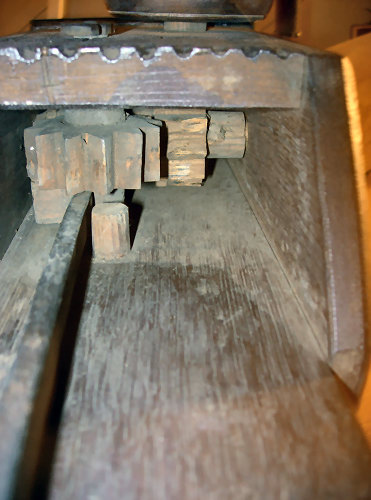

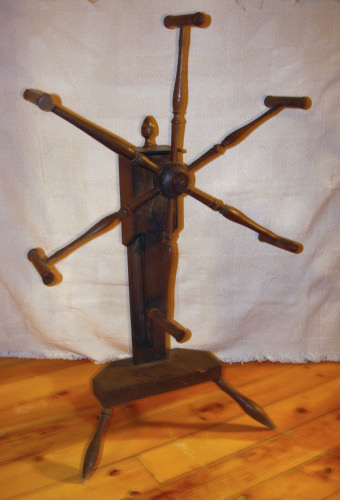
| The correct name for this item is clock reel, so-named for the clock mechanism it utilized in measuring thread. But people tend to call it a click reel, or more commonly, a yarn winder. While that is indeed what the clock reel did ~ wind yarn ~ the name, yarn winder, does not accurately describe the process of measuring that made the clock reel unique. And while the sound made by the piece does, in fact, resemble a 'click', the name, click reel, does not give credit to the clock mechanism. The clock reel's primary function was to measure the thread and/or yarn that was spun on a spinning wheel into skeins. With each full rotation of the clock reel's spokes (or arms), and therefore with each full winding of the thread onto the spokes, the clock mechanism of gears would make rotations, one causing another to move and so on. Each rotation of the gear attached directly to the spoke assembly would move another gear slightly, and eventually that gear would make another gear move, which would, in turn, move a thin wooden strip away from its relaxed position just enough so that when the rotation of the gears had measured out a skein (i.e. approximately 300 yards, or 900 feet), a slightly longer gear tooth would slip past the point of being able to hold the strip in tension. The strip, freed from its tense position, would fly back into its relaxed position, while at the same time slapping against a stationary block of wood which created a loud 'click' sound. The purpose of this process was to measure the thread/yarn into a standardized length, known as a skein. When the clock reel clicked, the thread/yarn would be removed from the reel and its end would be cut. Every skein wound on and removed from the same clock reel would measure the same length. This clock reel is in very good condition and emits a noticeable 'click' when the strip of wood flies back into its relaxed position. It probably dates to between the late 1700s and early 1800s. |
| It is interesting to note that some authorities believe that the nursery rhyme "Hickory Dickory Dock" refered to the clock reel in the phrase: The mouse ran up the clock. It is also believed by some authorities that the nursery rhyme, "Pop Goes The weasel" refers to the clock reel. For whatever reason, the clock reel was sometimes called a weasel. The rhyme, therefore, was commenting on the sound made by the 'weasel'. |
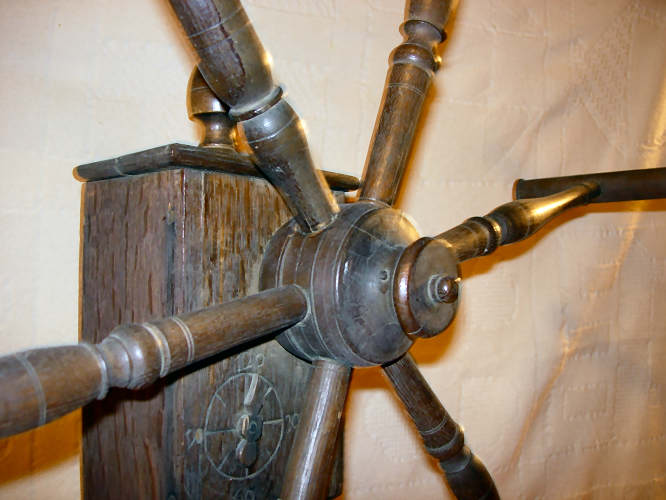
| The two images below show two of the spokes or arms. The image on the left shows an example of all of the spokes except one (which is shown in the image on the right). The difference between the one arm and all the others is the absence of a 'lip' on one end of the crosspiece of the one spoke. The absence of the 'lip' allowed the finished skein to be removed easily. |
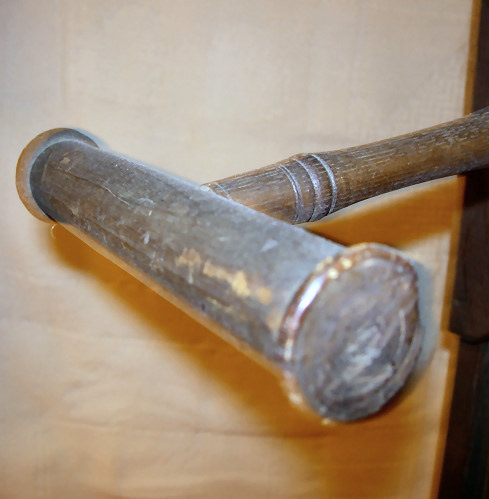
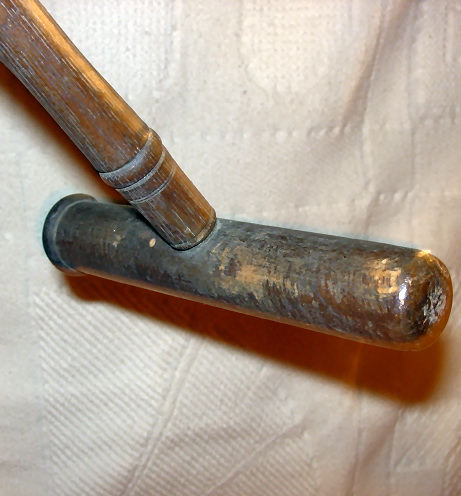
| The image below shows the inside of the clock reel's box. This image shows the 'clock' mechanism that measured the number of turns made by the spokes, and therefore measured the thread into skeins. |
